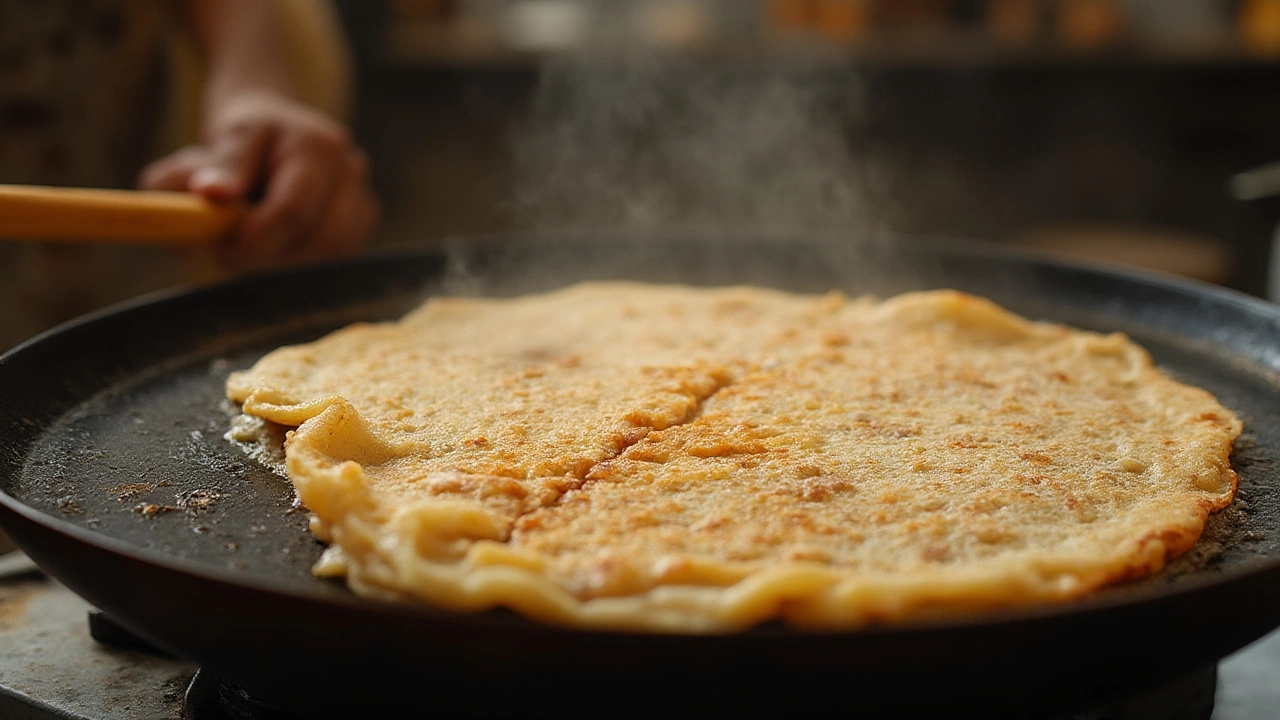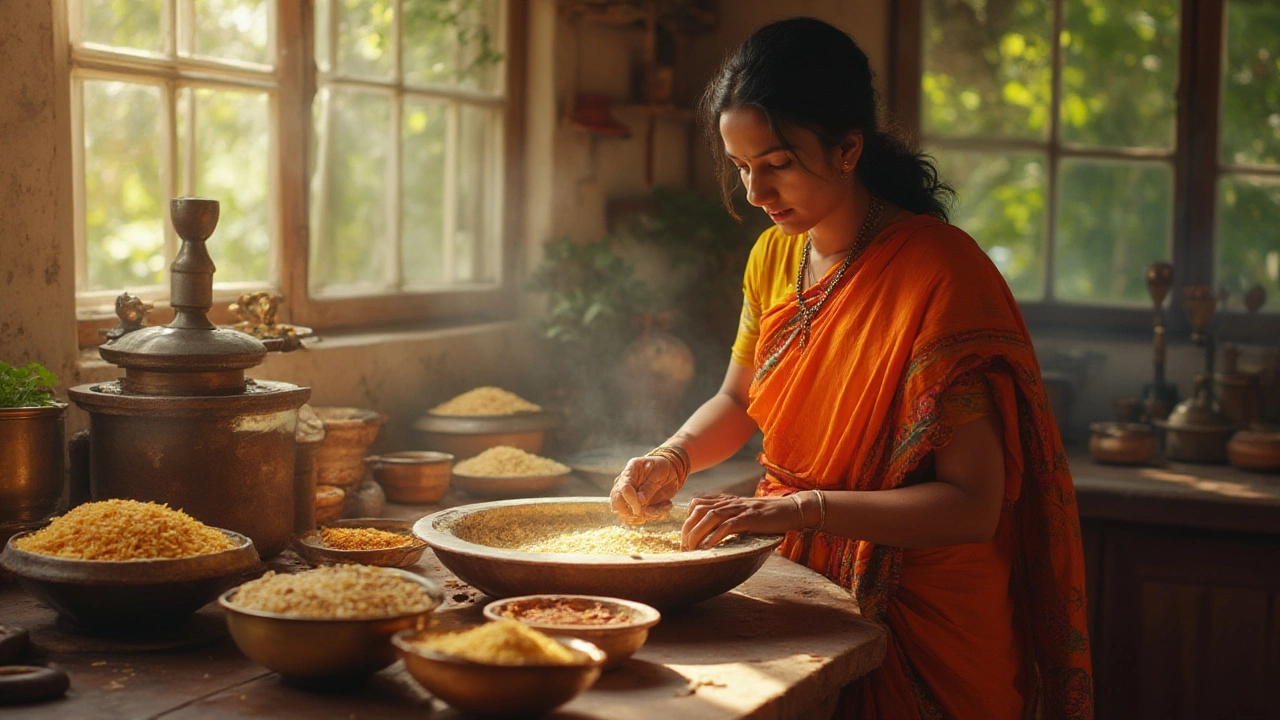Picture this: you wake up craving a golden, crispy-yet-soft dosa just like the ones from your favorite South Indian breakfast place. But somewhere between soaking the dal and pouring that first ladle of batter, things just don’t add up. Instead of a soft, lace-edged delight, your dosa turns out stiff—like it could double as a frisbee. It’s honestly heartbreaking. Don’t worry, you’re not alone! Dosas are simple, but they have a mind of their own. If yours ends up tough, plasticky, or just plain hard, there’s always a reason hiding behind that pan. Let’s pull up the curtain.
Understanding How Dosas Get Their Texture: The Science & Tradition
Your dosa gets its signature texture from a couple of basic—yet surprisingly scientific—steps. At its heart, dosa batter is a mixture of rice and urad dal (black gram lentils), which you soak, grind, and ferment. Dosa is simple, but it’s got secrets. Fermentation is a busy, invisible party where wild yeast and friendly bacteria go to work, breaking down starches and proteins in your grains. This is why fermented batters feel a little fluffy or spongy when you touch them.
If you skip or rush the fermentation, the batter stays dense and heavy, making your dosa hard. You ever notice bubbles forming overnight? That’s CO2 doing its magic—the sign that the chemistry is working as planned. South Indian homes often have their own unspoken fermentation rituals: some swear by using their hands to mix (for the natural bacteria), others by storing the batter in a steel vessel (never plastic) for that perfect tang. There’s a sweet spot between over-fermentation (turns batter too sour or thin) and under-fermentation (hard, bland dosa).
The ratio of rice to dal matters too. A sweet spot, according to classic Chennai cooks, is 3:1 (three cups rice, one cup dal), but sometimes folks sneak in a couple of spoons of fenugreek seeds for extra softness and flavor. And don’t forget water! The way you grind and dilute the batter affects whether your dosa ends up soft, elastic, or as stiff as cardboard.
Finally, cooking style makes a difference. The temperature of your tawa (griddle), how much oil or ghee you use, and even local humidity and your water quality can team up to mess with your results. Tamil grandmoms know the tawa’s ready when a sizzle of water dances across the surface, not when it instantly evaporates.
Top Reasons Why Dosa Turns Hard (And How to Fix Them)
Right, let’s jump into the usual suspects. If you’re struggling to move your dosa from the pan without breaking out a sweat, check these causes:
- Dosa batter too thick: Think toothpaste, not pancake batter. Dosa batter needs to be just runny enough to flow and spread effortlessly on your tawa. If your spoon stands upright in the batter, thin it out.
- Under-fermented batter: The batter should smell slightly sour and airy. If it’s flat, try fermenting longer or store it in a warm spot—especially in winter, or if you’re using old rice.
- Poor rice-dal ratio: Too much rice (or the wrong type of rice) makes the dosa chewy and dense instead of soft. Stick with raw rice or idli rice, preferably 3:1 or 4:1 rice to dal. Avoid basmati, which dries out quickly.
- Insufficient soaking or grinding: Rice and dal need time to soften up. Soak at least 6 hours, and grind to a smooth, fluffy paste—think soft ice cream, not gritty sand.
- Overcooking or low heat: Dosa needs quick, intense heat for that famous golden crisp edge, not slow roasting. Leave your tawa on high, then lower the heat as soon as you start spreading the batter.
- Not enough oil or ghee: You’re not deep-frying, but a few drops make all the difference to keep the dosa soft and lift it easily from the tawa. Skimping on oil almost always backfires.
- Old, dried-out batter: Leftover or week-old batter often makes tough dosas. Use within 2-3 days, or refresh with a little rice flour or water and re-ferment for an hour before cooking.
- Wrong utensil: Non-stick pans work, but seasoned cast iron tawas are the gold standard. Cast iron holds heat better, creating superior texture and less sticking. The seasoning matters. Shiny and black is better than grey and rusty.
Sometimes, even experienced cooks slip up. Supermarkets have so many different kinds of rice that it’s easy to choose the wrong one by accident. Or, if you’re somewhere cold, you might need to find creative spots for fermenting, like inside an oven with the light on, or near the back of your fridge where it’s warmest.

Proven Tips for Softer, Fluffier Dosa Every Single Time
The trick to soft dosa lies in mastering tiny details. Here’s how you can level up:
- Always measure your rice and dal. Consistency is key.
- For soaking, use filtered or soft water if your tap water is hard. Softer water makes grains plumper and helps better fermentation.
- Don’t skimp on grinding! Use as much water as the grinder needs but add it gradually, so you don’t drown the grains.
- Add a teaspoon or two of poha (flattened rice) into the soak—it’s a secret many South Indian homes use to get dosa ultra-soft.
- After grinding, let the batter sit loosely covered. Avoid tightly sealed lids—let those friendly bacteria breathe.
- If fermenting in cold weather, keep the batter atop the fridge or inside the oven (light on) for gentle warmth.
- Replace old, tired urad dal. Fresh, whole urad dal delivers a fluffier result than split dal. Skim off floating husk after soaking for better smoothness.
- Check your batter in the morning: a spoon dipped in should come out with some bubbles, the batter rising at least 30% in volume. No rise? Wait another 2-3 hours in a warmer spot.
- Before pouring batter, stir gently—don’t beat out the air you worked so hard to trap.
- Season your tawa regularly. After every batch, rub it with a halved potato dipped in oil for a naturally non-stick surface.
- Don’t pour batter onto a blazing hot tawa or an underheated one. Test by sprinkling drops of water—the right temp means they dance and sizzle, not vaporize immediately.
- Once cooked, cover dosas briefly with a damp cloth if you want them extra soft, though this can take away some crispness.
This isn’t just a science—it’s a little bit of art, family tradition, and learning from the last batch you made. If your dosa becomes hard, don’t sweat it. Tweaking just ONE thing—like fermenting a couple hours longer, or switching to a fresh batch of urad dal—can totally transform your results.
Dosa Batter: Ratios, Fermentation & Secrets You Never Heard From Your Auntie
If you ask five different South Indians about their ideal dosa batter recipe, you’ll get seven answers (and not one will be written down). Still, here’s a proven baseline and what you can do to make it your own:
| Ingredient | Quantity for 10 Dosa |
|---|---|
| Idli Rice | 2 cups |
| Urad Dal (Whole) | 1/2 cup |
| Fenugreek Seeds | 1 tsp |
| Poha (Flattened Rice, optional) | 2 tbsp |
| Water | as needed |
| Salt | to taste (after fermentation) |
Soak rice and dal (plus fenugreek and poha) separately for 6 hours. Grind each in a wet grinder or high-power blender—dal first, until fluffy; rice until smooth; then combine. The batter should be pourable and slightly thick. Ferment 8-12 hours, depending on weather. Salt goes in after fermentation so it doesn’t slow down the rising!
Hot tip: If your kitchen is chilly, try wrapping your vessel in a thick towel or tucking it inside your oven (switched off, but light on). Some folks add a teaspoon of sugar to encourage the good bacteria, but too much can oversour the batter. Still dry and crackly? Switch rice. Use short-grain idli rice, or try adding a couple of tablespoons of cooked rice to your batter before fermenting for an even softer finish.

Common Mistakes and Troubleshooting: Your Dosa FAQ
If things go sideways, it’s almost always one of these classic issues. Let’s clear them up in plain English:
- My batter didn’t ferment at all. Try fresh urad dal or a splash of leftover dosa batter as a starter. Next time, look for warmer spots to ferment.
- Dosa is sticking to the pan. Your tawa needs seasoning or is too new. Rub with oil and salt, heat, and wipe off several times before its first use. Old tawas work best for dosa – that slick, dark patina isn’t just bragging rights.
- Dosa comes out thick and hard. Your batter’s too stiff. Add water, little by little, until it spreads easily in a thin layer. Pour, swirl, and don’t fuss with it while it cooks.
- Dosa is pale, not golden brown. Your tawa probably isn’t hot enough, or you need a drizzle more oil. Remember, dosa should sizzle the moment it hits the surface.
- Batter tastes bitter. This happens when it sits too long or if you use too much fenugreek. Just a teaspoon per cup of dal is plenty.
And if you’re feeling wild, try rava dosa or instant oats dosa recipes, which work a little differently—no fermentation needed, just mix and pour. But nothing beats classic fermented dosa for that soft, tangy flavor and gentle golden crunch.
If the only thing standing between you and perfect dosa is a mystery batch that keeps turning hard, remember, you’re not alone. Even restaurants occasionally get it wrong. But it’s one of the most forgiving things to learn—unlike bread or cake, you can tweak the next batch within less than twelve hours and see real improvement.
By now, you’ve seen how much comes down to dosa batter—its chemistry, its care, and its timing. And hey, if your dosa comes out less than perfect, don’t just toss it! Hard dosa makes a great base for spicy podi or can be torn up into crunchy slivers for upma.
Mastering soft dosa is a bit of kitchen alchemy, part tradition, and part trial and error. Keep tweaking your process with these secrets and you’ll have a breakfast worthy of bragging about at the next Sunday family call.
